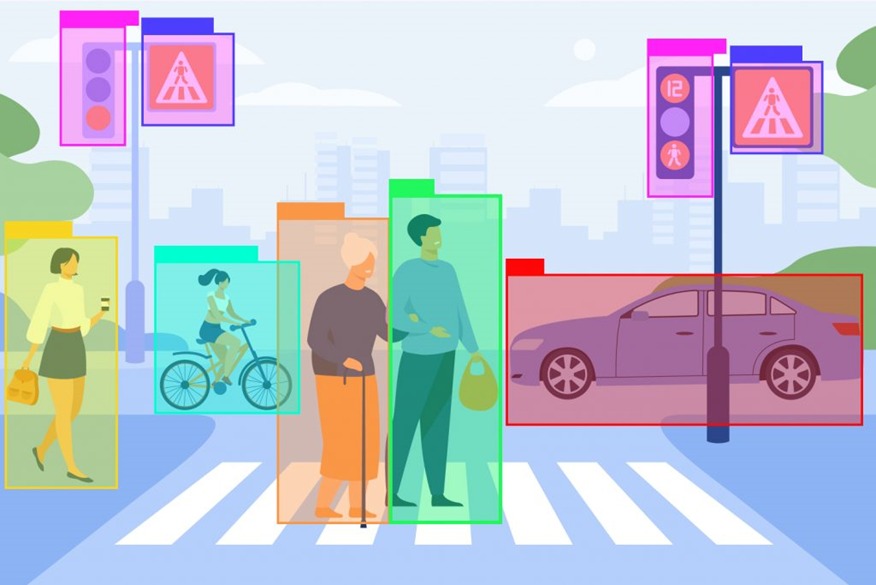Businesses in all industries depend on the strength and flexibility of machine learning and artificial Intelligence to extract useful insights from vast amounts of data. Image annotation is a crucial technique used in computer vision. It aids in the interpretation of visual data. This article explores the world of image annotation and the importance of image annotation tools such as software and solutions for unlocking the power of data-driven decision-making.

Image annotation is a process that involves labeling or tagging images by using metadata. This assists computers to comprehend and interpret information from visual images with precision. Image annotation allows ML models to recognize objects, patterns, and characteristics in images by introducing annotations, such as bounding boxes, polygons or even bounding lines. This process bridges a gap between raw images and actionable insights and opens the door to numerous applications, like autonomous vehicles, medical imagery, e-commerce, and surveillance.
To speed up the image annotation process, a wide array of annotation tools has been designed. They provide user-friendly interfaces that enable annotators to mark objects or regions of interest in images quickly. They offer a variety of annotation options and customizable tools to accommodate different data requirements. From simple drawing tools to advanced shape recognition and automated annotation suggestions Image annotation tools boost the speed and accuracy of annotation and allow annotations to be completed efficiently and quickly.
Image annotation software can take the annotation process to the next level by incorporating automation and collaboration features. These applications employ ML algorithms to automate annotation, decreasing manual work and boosting annotation speeds. Annotation software can speed up the labeling process through techniques like active learning as well as transfer learning.
Annotation software is also able to facilitate collaboration between multiple annotators. This lets teams collaborate seamlessly. It also provides real-time annotation versions and commenting functions, which ensures smooth communication. This method of collaboration does not only improve annotation quality, it also encourages knowledge-sharing and guarantees consistent annotations.
In selecting an image-annotation solution, it is important to consider a variety of factors. First, the solution needs to be compatible with the specific needs of the project, like the type of annotation needed (e.g. key points or polygons) and the complexity of the task of labeling, as well as scaling.
Secondly, the flexibility and flexibility of the solution is vital. A reliable annotation system should be able of customizing workflows for annotation and integrate with existing data management software. It should also be compatible with different data formats. This flexibility should allow the software to be integrated seamlessly into workflows already in place.
The quality of the annotations made by the solution is likewise something to be analyzed. Reliable image annotation solutions employ quality control techniques to ensure accuracy and consistency in labeling. These may include checking for agreement between annotations, inter-annotator validation, and constant feedback loops that connect annotators and reviewers.
The value of annotations on images goes beyond just the annotation process. Organizations can increase the value of data by leveraging image annotating tools, solutions as well as software. First and foremost, accurate annotations allow for the training and development of ML models with better quality and accuracy. The models are then used in a variety of applications, including object recognition and image classification.
Image annotation can also aid in the use of data in decision-making by providing meaningful, rich insight from visual data. In the health industry, medical images annotated with annotations may help diagnose conditions, recognize abnormalities, or plan treatment. In e-commerce applications, image annotations aid in product recommendation systems with image search features, and strategies for visual merchandising.
The use of annotation for images combined with data science has revolutionized the way we work by unlocking a valuable resource. It can speed up data analysis, reveal hidden connections, and provide real-time insight. Companies can gain a competitive advantage by reducing expenses, speeding up their time to market and streamlining processes by using images that are annotated. Images are an effective method to convey concepts and they’re much easier to comprehend than abstract images. A properly annotated image can allow data to be more easily accessible to everyone involved. Ultimately, when used correctly an image annotation can be an effective method of transforming data into actionable insights and increasing the value of data in all types of applications.
